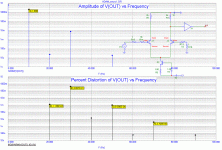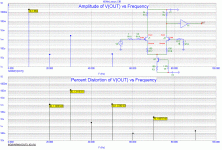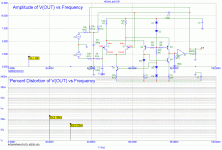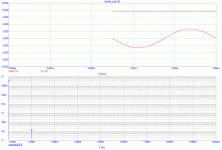john curl said:I'm more curious why wine can taste so different. I'm sure there is a very subtle level of tweaking known only to the vineyard, but I could be wrong. Know anything about it?
Scott, your talk with RS must not have gone too deep. I can only lead a horse to water, not---
Scott and Bob, you both should read Cherry's paper in 'IEEE Circuits and Systems Magazine' first quarter 2008, pp. 55-71. He has discovered higher order distortion generation from feedback.
I would LOVE to read that but I think the IEEE guards its papers closely. Is there an open source?
Jan Didden
I don't think that there is a free copy available, but you could probably order it through the IEEE. Bob and Scott should have a copy of the IEEE magazine through their office library or because they belong to the Circuits and Systems group of the IEEE. If they don't have access, then they are not keeping up, professionally. Only time will tell. However, there is another earlier article that is published in the JAES in April 2000, that looks even more exciting.
janneman said:
I would LOVE to read that but I think the IEEE guards its papers closely. Is there an open source?
Jan Didden
I get free copies on line. Jan take any SPICE and make an ideal modest voltage gain with a small amout of third order distortion i.e. Eout = 100Ein - BEin**3 then put 20dB or so of feedback around it to make a buffer. Surprise, surprise, the FFT has 5th, 7ths etc. while open loop by definition you only have 3rds.
This is not news.
This has been discussed and shown here several times (jcx, e.g., shown such FFT). What else would one expect from FB over non-linear element?
scott wurcer said:
I get free copies on line. Jan take any SPICE and make an ideal modest voltage gain with a small amout of third order distortion i.e. Eout = 100Ein - BEin**3 then put 20dB or so of feedback around it to make a buffer. Surprise, surprise, the FFT has 5th, 7ths etc. while open loop by definition you only have 3rds.
This is not news.
No it isn't news; it has also been discussed and shown in one of Bob's threads. (In fact I think I was the one who brought up the Baxandall paper on the subject).
I am curious though to read what Ed Cherry has to say about it.
Jan Didden
Going after this particular article is not really necessary for most of you. I was most pulling on the tails of a couple of uptown circuit designers here, to keep them on their toes. The more interesting paper is JAES 'Estimates of Nonlinear Distortion in Feedback Amplifiers' by Ed Cherry April 2000 pp. 299-313 which is referenced in his later paper.
PMA said:And the local feedback makes the same, look at two examples:
The problem here is that you have two things happening at once,
the device variation in gain due to current fluctuation and
simultaneously the variation in gain due to voltage fluctuation.
What does your sim show if you apply a cascode to those
devices, holding the Vce constant, and then apply feedback?
Nelson Pass said:The problem here is that you have two things happening at once,
the device variation in gain due to current fluctuation and
simultaneously the variation in gain due to voltage fluctuation.
So the implication in this discussion is that this is audible? What kind of audible contribution would one assign to this effect?
No need to answer. I wouldn’t be able to grasp the explanation. I'm much too simple minded. 🙄
Mike, if you ask, yet insist that there is no explanation, then you only confuse the thread. Why do you want to do this?
Personally, I like to learn from masters in circuit design, like Nelson Pass. He differs from many others here, in that he makes successful audio products, and has done so for decades.
Personally, I like to learn from masters in circuit design, like Nelson Pass. He differs from many others here, in that he makes successful audio products, and has done so for decades.
john curl said:Mike, if you ask, yet insist that there is no explanation, then you only confuse the thread. Why do you want to do this?
I possess a weird combination of sarcasm and irony.
I have my own experiences that I draw on, I throw things out to try to generate a discussion and there is either no response or someone drags out a textbook and the discussion stops.
It's my expectations that I keep stumbling on; it happened again with my post yesterday and I'm just a bit frustrated. Pay it no mind.
john curl said:Personally, I like to learn from masters in circuit design, like Nelson Pass. He differs from many others here, in that he makes successful audio products, and has done so for decades.
I have learned alot from all of you since I found this site and there was, by intention, no slight to Nelson intended.
Nelson Pass said:
The problem here is that you have two things happening at once,
the device variation in gain due to current fluctuation and
simultaneously the variation in gain due to voltage fluctuation.
What does your sim show if you apply a cascode to those
devices, holding the Vce constant, and then apply feedback?
Nelson that's why I posted that simple experiment. Applying feedback around otherwise infinite dynamic range ideal sources (with pure third order nonlinearity) creates the higher harmonics. Trying real devices obfuscates the matter somewhat. Personally I feel this is a curiosity when applied to real amplifiers, especially modern ones. I think Baxandall was working with unusually low gain common source FET amplifiers like the ones you would find in a 70's microphone.
Nelson Pass said:
What does your sim show if you apply a cascode to those
devices, holding the Vce constant, and then apply feedback?
Then it is a different story ..... 😉
(sorry for time zone difference)
Attachments
scott wurcer said:
Nelson that's why I posted that simple experiment. Applying feedback around otherwise infinite dynamic range ideal sources (with pure third order nonlinearity) creates the higher harmonics. Trying real devices obfuscates the matter somewhat. Personally I feel this is a curiosity when applied to real amplifiers, especially modern ones. I think Baxandall was working with unusually low gain common source FET amplifiers like the ones you would find in a 70's microphone.

Ahh, OK, so we have the additional harmonics caused by nfb, even if the device is perfectly linear. As predicted by the math.
Then we have harmonics due to the device non-linearity.
I remember when Bob C did some work on this he found ripples in the curves of harmonic level vs fb factor, as if there was some form of cancellation at certain levels.
Starts to make sense (at least to me, YMMV 😉 )
Jan Didden
janneman said:
Ahh, OK, so we have the additional harmonics caused by nfb, even if the device is perfectly linear. As predicted by the math.
No. It has pure 3rd harmonic of some 1%, so it is NOT perfectly linear. 3rd harmonic is NONLINEAR distortion.
Where does the third harmonic come from in a differential pair? Why doesn't someone do something useful and show us. 

john curl said:Where does the third harmonic come from in a differential pair? Why doesn't someone do something useful and show us.
Joking? No 3rd, as you like it ...
Attachments
- Status
- Not open for further replies.
- Home
- Amplifiers
- Solid State
- John Curl's Blowtorch preamplifier




